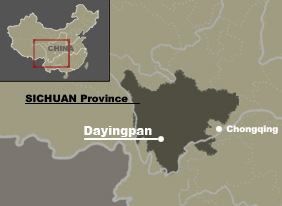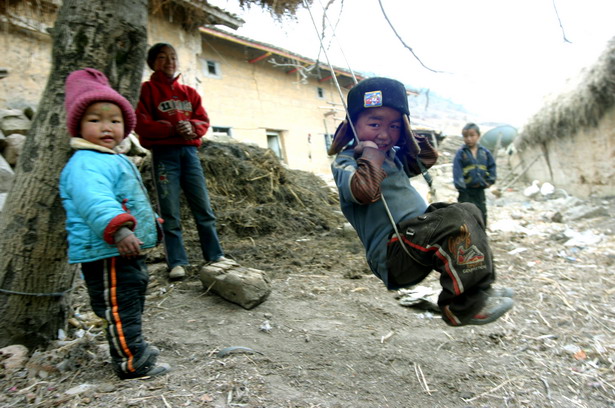


A leprosy victim taking a nap in front of his doorstep.

Dayingpan is one of the many proverty-stricken villages tucked in the mountainous region of Liangzhou's Yi minority autonomous prefecture of western China's Sichuan province.
Back in the 1960s, the local government transferred all of its leprosy patients here to prevent infection of this "incurable" disease at that time. In the ensuing forty years, they built new homes, planted crops, received treatments, and raised children and grandchildren. Most of them had never walked out of the village until five years ago, when the first stone road leading to the outside world was built.
In 2005, Dayingpan was finally admitted as an administrative village by the government, which meant that over 1,000 residents here would finally have their own identity cards and hukou, or residential registration. Today, there are fewer than 100 elders still living in the village, or 10% of the total population. Though the younger generation is free from the disease now, they are still called "leprosy children" by residents in neighboring villages.
As elders passed away and younger patients are being cured, the disease is gradually withdrawing from the village. In two or three decades to come, there probably will be no leprosy patients left. Hopefully, the clouds of discrimination will follow suit.

A leprosy patient and all his belongings.

The local children's park in Dayingpan.

An elderly woman and her companion.

Children playing cards in a corner of the village.

Both old and young gather for a village event.

A woman carrying firewood home.
***
This is part of a continuing series by EO photojournalist Luo Jian, who has been reporting on overlooked communities impacted by China's development and urbanization.